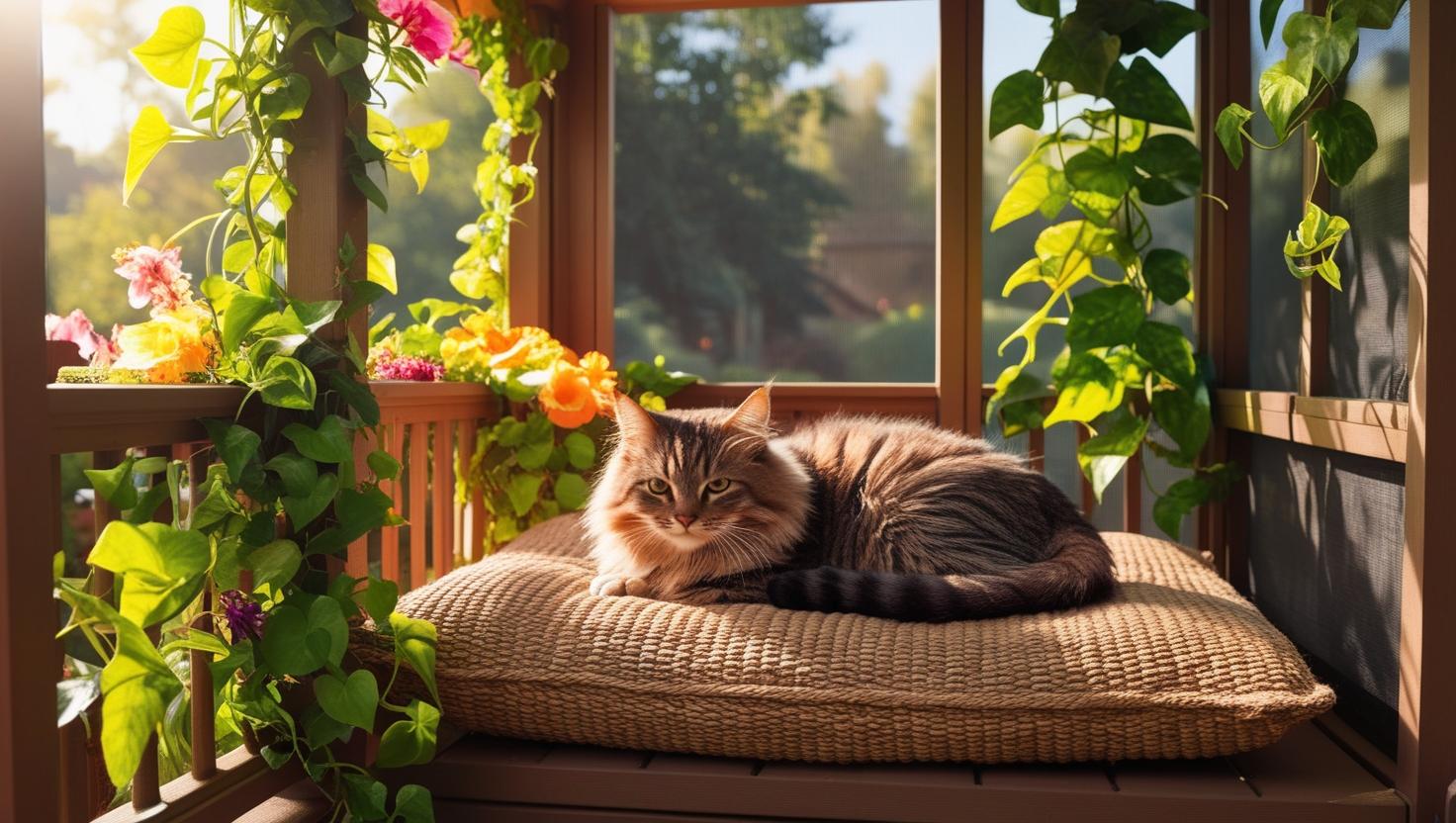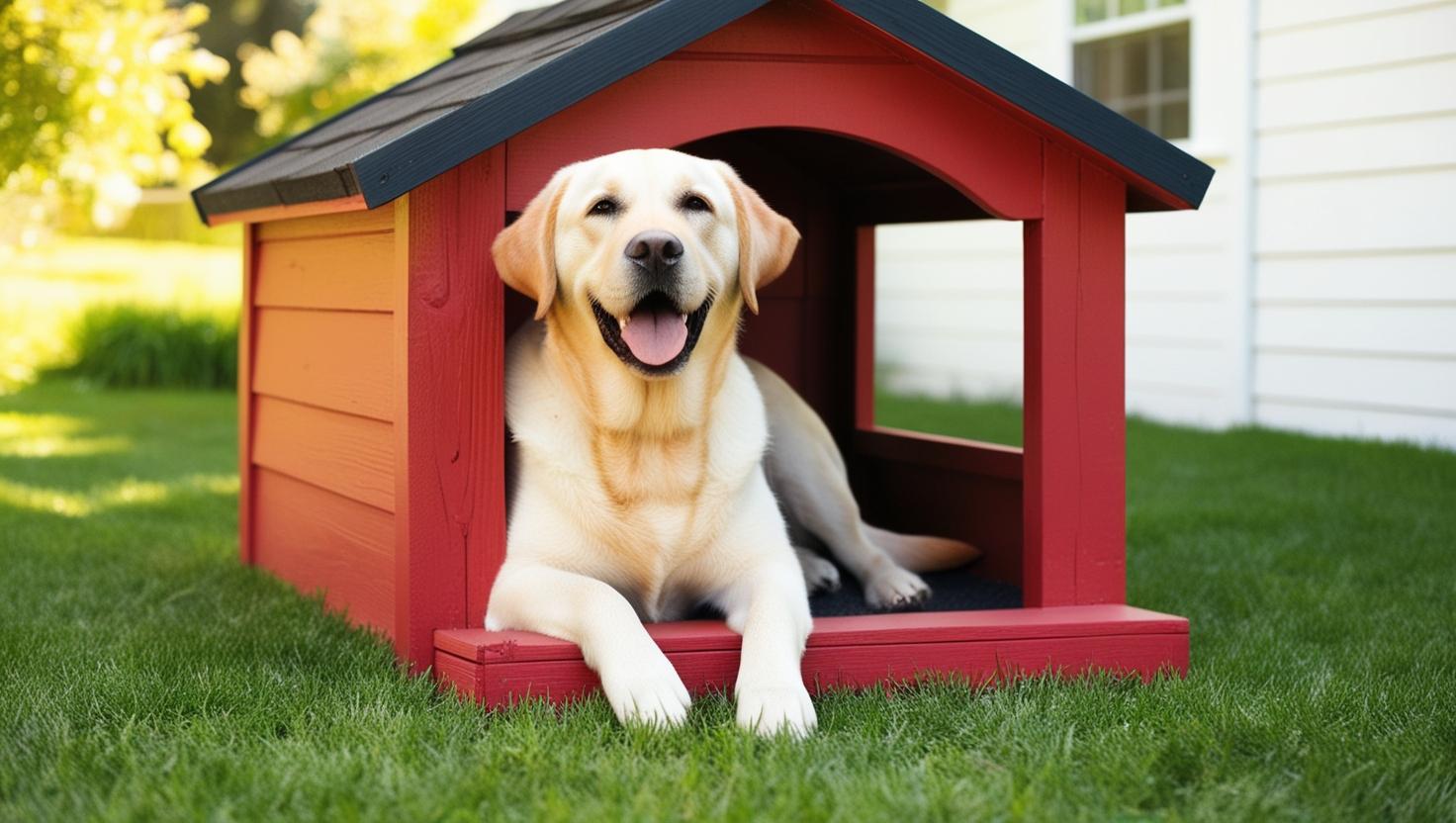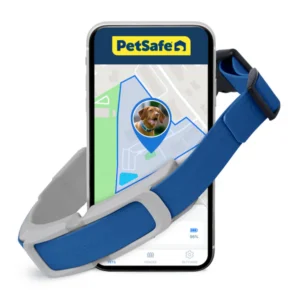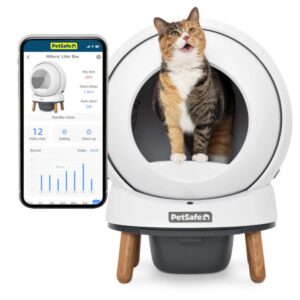There’s nothing quite like seeing your pet bask in the sunshine or playfully explore the backyard. Whether it’s your dog’s joy at chasing a butterfly or your cat finding the perfect sunny spot to lounge, spending time outdoors can be a source of great happiness for our furry friends. But along with the fun comes the responsibility of keeping them safe from potential hazards.
From setting up secure boundaries to providing weather protection, there are many ways to create a safe and enjoyable outdoor environment for your pet. Simple adjustments—like making sure they have shade, access to fresh water, and a cozy shelter—can make all the difference in keeping them happy and healthy.
In this guide, we’ll explore a range of practical tips to help you design the perfect outdoor space for your pet, so they can safely enjoy their outdoor adventures, and you can relax with peace of mind.
Secure the Perimeter
Let’s face it, some pets are natural escape artists. Whether it’s a dog squeezing through a small gap in the fence or a cat finding a way to leap over a wall, ensuring the perimeter is secure is the first step in creating a safe outdoor environment. Here’s how you can keep your furry friend safely within boundaries:
- Traditional Fencing: A sturdy physical fence remains one of the best ways to keep pets contained. Make sure the fence is high enough for your pet’s jumping abilities and that there are no gaps or weak spots. For digging dogs, consider adding an underground barrier along the base.
- Landscaping Barriers: Strategically placed shrubs or hedges can act as natural barriers to keep pets away from certain areas. Thorny plants, like rose bushes, can help deter adventurous pets from squeezing through tight spots.
- Safety Gates for Decks or Patios: If your outdoor space includes a deck or patio, consider adding pet-specific safety gates. This can prevent small pets from slipping through railings or wandering off.
- Collars and ID Tags: Make sure your pet wears a collar with updated identification tags at all times. Fido Alert and Tabby Alert offer free ID tags that give you access to nationwide pet alert network connecting you to local Pet Finders to help bring your lost cat home safely. This non-tech solution is simple but essential in case your pet manages to escape.
- Pet Insurance: In case of accidents or escapes, having pet insurance can provide peace of mind by covering potential medical expenses. It’s a practical addition to any pet safety plan. Two pet insurance companies we recommend are Lemonade Pet Health Insurance and Embrace Pet Insurance.
- GPS Invisible Fencing: For those who prefer an open yard or have zoning restrictions, GPS invisible fencing is a great alternative. It allows you to set up boundaries without the need for a physical structure, giving your pet the freedom to roam while staying safely within designated limits.

Pro Tip!
If you have a dog, a top choice for this is the Halo Collar 5, which offers advanced GPS tracking and customizable boundary settings. The collar also includes built-in training features to help guide your dog and reinforce the boundaries.
Provide Weather Protection
Pets love the outdoors, but just like us, they need protection from the elements. Whether it’s a hot summer day or a chilly winter evening, having options to keep your pet comfortable can make all the difference. Here are some practical ways to provide weather protection:
- Shaded Areas: Make sure there are shaded spots in your yard where your pet can escape the sun. Natural shade from trees or a covered patio works well, or you can add a pet canopy or outdoor umbrella for extra coverage.
- Pet Houses and Shelters: A well-insulated dog or cat house can offer protection from rain, wind, and cold temperatures. Opt for a traditional wooden or plastic pet house, or go a step further with a heated cat or dog house for those colder months.
- Cooling and Heating Options: For areas with extreme weather, heated or air-conditioned pet houses can help regulate your pet’s temperature, providing a comfortable retreat. Just make sure to use these products safely by following the manufacturer’s instructions.
- Hydrating Supplements and Quality Food: High-quality pet food and hydrating supplements can help maintain your pet’s health during outdoor activities. Consider adding electrolyte supplements for pets that spend extended time outdoors.
- Water Stations: Always have fresh water available, especially on hot days. Consider using a pet water fountain that encourages hydration by keeping the water fresh and cool. Alternatively, place multiple water bowls in shaded areas and refresh them regularly.

Pro Tip!
The UV-resistant PetSafe® Drinkwell® Outdoor Dog Fountain is a practical option for households with large dogs or multiple pets, providing plenty of water with its 450 oz. capacity. Its free-falling stream and durable design make it a great choice for your outdoor space.
Safe Access In and Out

Giving your pet the freedom to move between indoor and outdoor spaces is not just convenient; it’s also a great way to let them choose where they feel most comfortable. But to make this safe for your pet, it’s important to have the right setup in place.
- Smart Pet Doors: Installing a smart pet door can give your pet the freedom to come and go while keeping unwanted visitors out. These doors can be programmed to open only for specific pets, using microchip recognition or collar sensors, adding an extra layer of security. For example, the SmartDoor™ Connected Pet Door allows you to control access remotely through an app, so you can manage your pet’s comings and goings even when you’re not at home.
- Traditional Pet Flaps: If you prefer a simpler option, a standard pet flap can still be effective. Just make sure it has a lockable feature to secure it when needed, such as at night or when you’re not home.
- Pet Ramps and Steps: If your outdoor space is elevated or has uneven surfaces, adding a pet ramp or stairs can make it easier and safer for your pet to access the area. This is especially helpful for senior pets or those with mobility issues.
- Screened-In Porches or Balconies: If you have a porch or balcony, consider enclosing it with pet-proof screens. This setup allows your pet to enjoy fresh air and sunshine without the risk of wandering off or encountering other animals.
- Barrier Mats and Rugs: For pets that tend to track dirt inside, place barrier mats or washable rugs near the entrances. This can help keep your indoor space cleaner and reduce the need for frequent baths.
Keep an Eye on Your Pet
You can’t always be outside with your pet, but that doesn’t mean you can’t keep an eye on them. Monitoring your pet’s outdoor activities can help you spot any potential dangers or behavioral issues quickly. Here’s how to keep tabs on your furry friend, even when you’re not right by their side:
- Security Cameras: Setting up an outdoor security camera allows you to monitor your pet’s activities and the surrounding area in real-time. Look for features like motion detection, two-way audio, and night vision to get the most out of your setup. This way, you can not only see what your pet is up to but also call them back if they wander too far.
- Pet Activity Monitors: Think of these as fitness trackers for your pet. They attach to your pet’s collar and track their movement, rest, and even calories burned. While they won’t replace regular vet visits, they can provide valuable insights into your pet’s overall health and activity levels, helping you catch any changes in behavior early.
- Periodic Outdoor Checks: Even with the best gadgets, there’s no substitute for a good old-fashioned check-in. Make it a habit to step outside and check on your pet regularly. This gives you a chance to look for any hazards that might have popped up, like broken fencing or harmful plants.
- Neighbors as Backup: If you have a close relationship with your neighbors, ask them to keep an eye out for any unusual activity involving your pet. A quick text or phone call can alert you to potential issues if you’re not home.

Enhance Visibility and Safety at Night
When the sun goes down, the outdoor world can become a little more unpredictable. Whether it’s making your pet visible to passing cars or ensuring they don’t wander into trouble, night safety is crucial. Here’s how you can keep your pet safe after dark:
- Wearable Safety Lights: Lightweight and easy to attach to collars, wearable safety lights or illuminated harnesses can make your pet visible from a distance. They come in various shapes and sizes, some with blinking modes to catch attention even better. These are especially useful during evening walks or in low-light conditions.
- Reflective Collars and Leashes: If you prefer a simpler approach, reflective collars and leashes are great options. They don’t require batteries and work by reflecting light from sources such as headlights. This can help ensure your pet is seen by others when it’s dark out.
- Nighttime Supervision: While gadgets are helpful, supervising your pet when they’re outside at night remains one of the best ways to ensure their safety. Even if you have a fenced yard, keeping a close eye on your pet can help you quickly react to any unexpected situations.
- Solar-Powered Yard Lights: Installing solar-powered lights along walkways, fences, or pet play areas can help illuminate the yard without adding to your electricity bill. These lights charge during the day and automatically turn on at dusk, providing consistent lighting without any hassle.
- Brightly Colored Pet Clothing: If your pet spends a lot of time outside at night, consider using brightly colored vests or bandanas to increase their visibility. This is a simple, non-tech option that works well in combination with reflective gear.
Create a Fun and Enriching Environment
A safe outdoor space isn’t just about protection; it’s also about making sure your pet enjoys their time outside. Providing a stimulating environment can help reduce boredom and stress, keeping your pet happy and well-behaved. Here are some ways to add fun and enrichment to your outdoor area:
Pet-Friendly Landscaping:
Incorporate features like sandboxes for digging, safe plants for exploring, or pet-friendly water features. Adding different textures, such as grass, gravel, or mulch, can also make the space more engaging for your pet’s senses.
Agility Equipment:
Setting up a mini agility course with tunnels, jumps, or weave poles can offer physical and mental stimulation. You don’t need a full setup—even a few DIY obstacles using household items can provide great exercise and entertainment for your pet.
Catio:
For cats, a “catio” (cat patio) is the perfect solution to give them safe outdoor access. This enclosed space can be as simple or elaborate as you like. The enclosed structure keeps your cat safe from potential dangers like predators or traffic while allowing them to enjoy fresh air and sunshine. A well-designed catio provides vertical space for climbing, perches for lounging, and even plants that are safe for cats to explore, making outdoor time both fun and secure.
Outdoor Toys and Puzzles:
Stock the outdoor space with durable toys and puzzle feeders that challenge your pet’s mind. Rotating the toys periodically can keep things interesting and prevent your pet from losing interest.
Safe Chew Items:
Provide your pet with natural, non-toxic chews to satisfy their chewing instincts. This can help keep them occupied and reduce the likelihood of destructive behavior, such as chewing on plants or outdoor furniture.
DIY Digging Box:
If your dog loves to dig, create a designated digging box filled with sand or dirt. You can even hide toys or treats inside to encourage appropriate digging behavior.

Additional Safety Considerations
Outdoor safety goes beyond just setting up the perfect space—it’s also about being prepared for unexpected situations and taking extra steps to ensure your pet’s well-being. One key consideration is to always be mindful of what’s in your yard.
Avoid using harsh chemicals like pesticides or fertilizers that can be toxic if your pet comes into contact with them. Opt for pet-safe alternatives or natural solutions to keep your yard looking good without risking your pet’s health.
It’s also smart to keep a pet-specific emergency kit on hand. A well-stocked kit should include items like a pet first-aid manual, bandages, antiseptic wipes, tweezers for removing splinters or ticks, and any medications your pet might need. Having these supplies readily accessible can make a big difference in how quickly you can respond to minor injuries or emergencies.
Cleanliness matters, too. Regularly picking up after your pet, especially if they share the outdoor space with other animals, reduces the risk of spreading parasites or diseases. For multi-pet households, ensure each pet has their own designated feeding and resting area to minimize conflict and stress.
Lastly, don’t forget to consider seasonal changes. As the weather shifts, so do the needs of your pet. For example, in colder months, you might want to increase your pet’s calorie intake slightly to help them maintain body heat. In contrast, during summer, consider scheduling outdoor playtime during the cooler parts of the day, like early morning or late afternoon, to avoid overheating.
Top Tips for Keeping Pets Safe While Outdoors
When it comes to outdoor safety, sometimes it’s the little things that make the biggest difference. Here are some quick, actionable tips to help you keep your pet safe and comfortable while they enjoy their outdoor adventures:
- Supervise Whenever Possible – While outdoor tech gadgets can be incredibly helpful, nothing beats keeping an eye on your pet yourself. Regular supervision lets you spot potential dangers, like wildlife, stray animals, or broken fences before they become a problem.
- Keep Fresh Water Accessible –Always have a bowl of clean, cool water available, especially during warmer weather. Dehydration can be a serious risk for active pets, so placing multiple water stations around the yard is a smart move.
- Check for Toxic Plants –Some common outdoor plants can be harmful or even deadly to pets if ingested. Regularly inspect your outdoor space to ensure there are no dangerous plants, and opt for pet-safe options like sunflowers, marigolds, or bamboo.
- Properly Gate and Cover Pool Areas –Pools can pose a drowning hazard for pets, especially when no one is around to supervise. Make sure your pool is securely gated and consider using a pool cover to prevent accidental falls. Even pets that can swim may struggle to find their way out if they accidentally fall in, so investing in a pet-safe pool fence or alarm can add an extra layer of safety.
- Update ID Tags and Microchips –In case your pet does manage to get loose, up-to-date ID tags and microchipping are lifesavers. Include your current phone number and any relevant medical information on the tag for quick identification.
- Prepare for the Elements –Depending on the season, weatherproofing your pet is essential. This might mean using pet-safe sunscreen for light-colored or short-haired animals during summer, or fitting your dog with a cozy sweater during colder months.
- Pet Insurance is Worth It –Accidents can happen, even with the best precautions in place. Pet insurance can cover unexpected medical expenses and provide peace of mind, especially if your pet enjoys more adventurous outdoor activities.
- Regular Health Checks –Give your pet a quick check after outdoor time—look for ticks, scratches, or signs of heat exhaustion. Regular inspections can help catch small issues before they become serious problems.
Conclusion
Creating a safe outdoor space for your pet involves more than just opening the door and letting them roam. It’s about thoughtful planning, the right mix of tech and traditional solutions, and taking proactive steps to ensure your pet’s well-being. Whether you’re using GPS fencing to establish boundaries, setting up shaded areas and weather-proof shelters, or simply making sure fresh water is always available, every little detail contributes to your pet’s safety and happiness.
Remember, pets thrive when they feel secure and stimulated, so keep their individual needs in mind when designing their outdoor environment. By combining safety measures with enrichment opportunities, you can transform your yard into a haven where your pet can explore, play, and relax with confidence.
Now it’s time to put these ideas into action and create the perfect outdoor space for your furry friend. Take a look at some of the products and tips we’ve mentioned, and see how a few small changes can make a big difference in your pet’s outdoor experience. Here’s to many safe and happy adventures ahead!
You May Also Like...
Keep your dog safe while they explore with top GPS collars and virtual fences. From advanced tracking to adaptable boundaries, find the perfect solution here!
10 Best Dog Food Delivery Services of 2024
You know that choosing the right dog food is absolutely vital to your pup’s health and happiness, but with busy schedules, getting top-quality meals can be a challenge.
Best Self-Cleaning Litter Boxes for Cats
We’ve reviewed the top self-cleaning litter boxes to help you find the perfect one for your cat. We’ve ranked the best options based on performance, design, and ease of use.
Author
-
Hey there, I'm Jamey, and I've been an animal lover for as long as I can remember. Growing up on a 50-acre farm in Ontario, Canada, I was surrounded by a menagerie of furry friends, from beloved cats and dogs to goats, horses, cows, and even chickens. Now, I call Victoria, British Columbia my home, and my heart belongs to my adorable Balinese cat, Milo. When I'm not editing blog posts, I enjoy helping solo entrepreneurs with their passion projects and online marketing. Over the years, I've also ventured into creating and selling various blogs.





